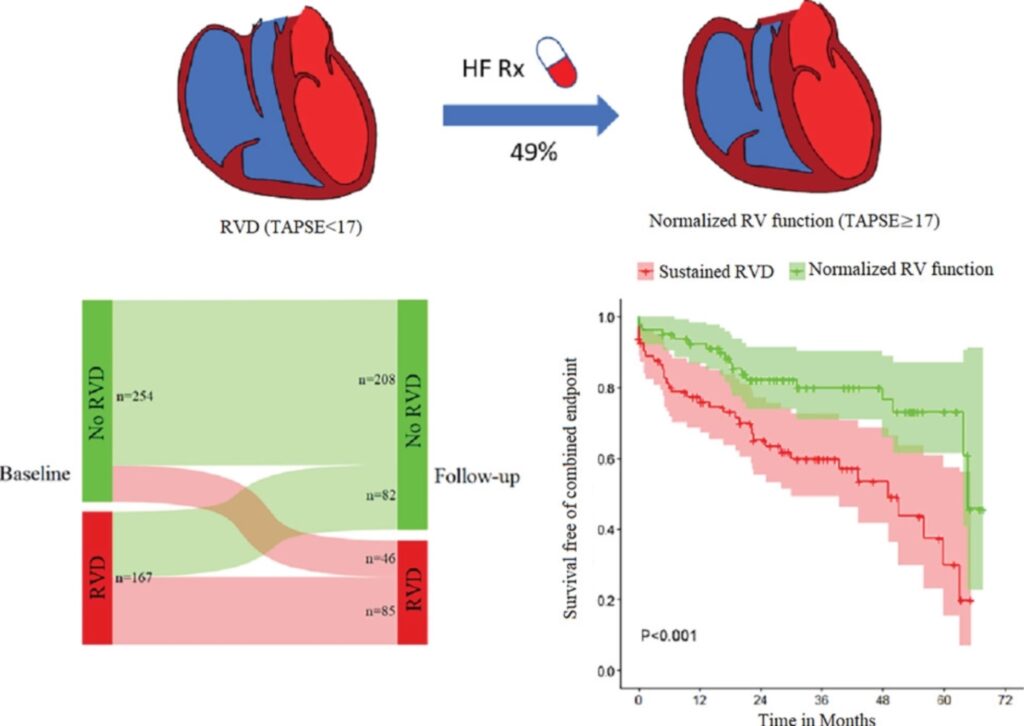Publication: Right ventricular dysfunction in patients with new-onset heart failure
Mohammad Mostafa Ansari Ramandi and coallegues have investigated the role of right ventricular dysfunction in the context of heart failure. They published their study in the European Journal of Heart Failure.
In this paper it has been shown that right ventricular dysfunction (RVD) is prevalent in patients with new-onset heart failure, affecting 38.6% of these patients. These patients were more symptomatic and older, had a lower left ventricular ejection fraction, worse renal function, more history of atrial fibrillation and cardiothoracic surgery. Patients who had RVD at baseline and follow-up after up-titration of their medications had worse outcomes during a mean follow-up of 3.3 years.
Interestingly, after a mean of 9 months duration of guideline directed medical therapy (GDMT) up-titration, about half of these patients improve to have a normal RV function. This normalization of RV function is associated with better outcomes in these patients independent of the left ventricular (LV) function.
One of the factors associated with improvement of the RV function was achieving target doses of angiotensin-converting enzyme inhibitors and angiotensin receptor blockers. Patients who had improvement of RV function had also lower levels of NT-proBNP irrespective of the LV function which might be due to the direct effect of the RV myocardium. Patients who had history of cardiothoracic surgery were less likely to have improved RV function after up-titration of the medications. Whether this is due to the geometrical changes happening in the RV or true myocardial dysfunction needs further evaluation.
To read the full open-access article, please click here !
